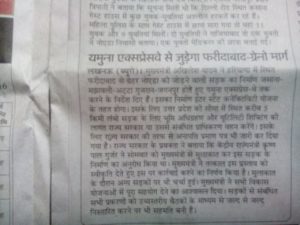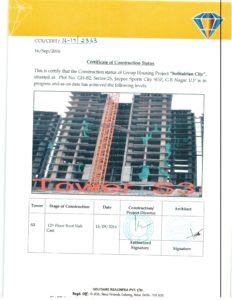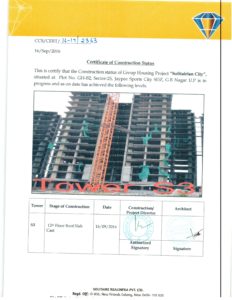If you unclip the back of your new Samsung smartphone, or one from a homegrown brand like Karbonn, Lava or Intex, you might find a `Made in India’ sticker there. And chances are that the device has been assembled in the Noida-Greater Noida region at Delhi’s doorstep.Ever since the Centre introduced a 10.5% duty differential between imported devices and those made locally in last year’s Budget, the region has become India’s biggest smartphone hub, with a capacity to make more than 140 million devices per annum -40% more than a year’s demand.
Not that Qualcomm and MediaTek are stamping out processors here -all the critical components still come from China and Taiwan -but it is a significant start for the industry . Sources said the local industry does about 5-8% of value addition at present, and this can be scaled up to around 35% within five years.
The flurry of investments to the region was perhaps prompted by the presence of Korean giants Samsung and LG. Samsung, which started local manufacturing a decade ago and reportedly has the highest installed capacity of 40 million devices per annum -the company did not confirm it -seeded a significant number of smartphone com ponent suppliers in the area.The company produces mobile phones from completelyknocked-down (CKD) kits.
“All our mobile phones, from feature phones to the Galaxy S7 that we sell in India, are manufactured at our Noida factory , and we will continue to explore future investment opportunities,“ a spokesperson for Samsung said.
Now Indian brands like Lava, Intex and Karbonn, besides Taiwanese contract manufacturer Wistron, have also set up shop. In partnership with home-grown telecom retailer and manufacturer Optiemus, Wistron makes phones for LG, China’s OnePlus and Oppo, and Taiwan’s HTC. Another Chinese vendor, Water World Technology , has partnered local company UTL Group, which is one of the backers of Karbonn Mobiles. Each factory creates 3,000-4,000 direct jobs, employing mostly high-school or ITI graduates.
Proximity to Delhi, where most home-grown phone brands are headquartered, has certainly helped the region bloom despite UP’s iffy image as a business destination. “The promoters wanted operations in a region that remains within their reach and under their control,“ said Narendra Bansal, chairman of Intex Technologies, a major Indian phone brand.
“Noida’s proximity to the capital, its growing infrastructure, and development as a large residential hub close to the capital’s business districts also helped,“ the Samsung spokesperson said.
Intex, which has three factories in Noida with an annual installed capacity of 30 million phones (feature and smart), is now setting up a 20-acre base at Kasna in Greater Noida for a larger integrated facility that will also house key suppliers. “There are huge advantages here in terms of the cost and availability of labour. The power supply is largely uninterrupted and the productivity levels are even better than China’s in many cases,“ said Sunil Vachani of Dixon Technologies whose company makes Karbonn and Panasonic devices in a joint venture. But is it easy to do business in UP? “The benefits may be less than in states like Andhra Pradesh, which offer incentives. However, operating in the south is difficult for a north-Indian brand. Moreover, the UP administration is supportive,“ Vachani added.
Lava managing director Hari Om Rai said availability of land in the Noida-Greater Noida industrial area has also been an important enabler. “There may be a few instances of difficulty in getting approvals, but the broader policies are clear,“ said Rai whose company has an annual installed capacity of nearly 36 million devices. “We have not faced interventions by the government.“
Now, even Chinese vendors and suppliers are gravitating to the region, drawn by its large production capacities. The manufacturing processes are still low-end, with a lot of assembly done manually , but efforts to increase local engagement and add sophisticated processes, such as the assembly of printed circuit boards (PCB), are on.
Analysts said PCB assembly will enhance the quality of local manufacturing. Also, there are efforts to develop R&D and design capabilities within the country , instead of relying on partners in China and Taiwan. “It will take at least 5-7 years to develop a high valueadd manufacturing set-up here,“ said Pardeep Jain, MD of Karbonn Mobiles.
IT minister Ravi Shankar Prasad said more initiatives are planned to boost the manufacturing of electronics.“Electronics manufacturing is a focus of the government as part of the `Make in India’ initiative. The current investments have resulted in as many as 40,000 direct jobs and over 1.2 lakh indirect employment. We estimate that mobile phone production will reach a level of around 500 million devices by 201920.“
For now, uncertainty over the fate of the 10.5% duty differential in a GST regime is worrying investors, even though they have welcomed the simpler tax structure a GST will bring. “It will be near-suicidal to make fresh investments until GST is described,“ Jain said. “We do not want to gamble in such an uncertain scenario,“ Vachani added.
Minister Prasad said concerns around GST would be addressed.“Please remember, GST is for India.Surely , in the whole fiscal architecture we will ensure that Indian manufacturing interests are saved.“
Asked if the duty differential between local manufacturing and imports will be maintained, he said, “Obviously , why not… the interest of India’s manufacturers will be kept in mind.“












Latest Comment
Good for the new areaVandana Keelor